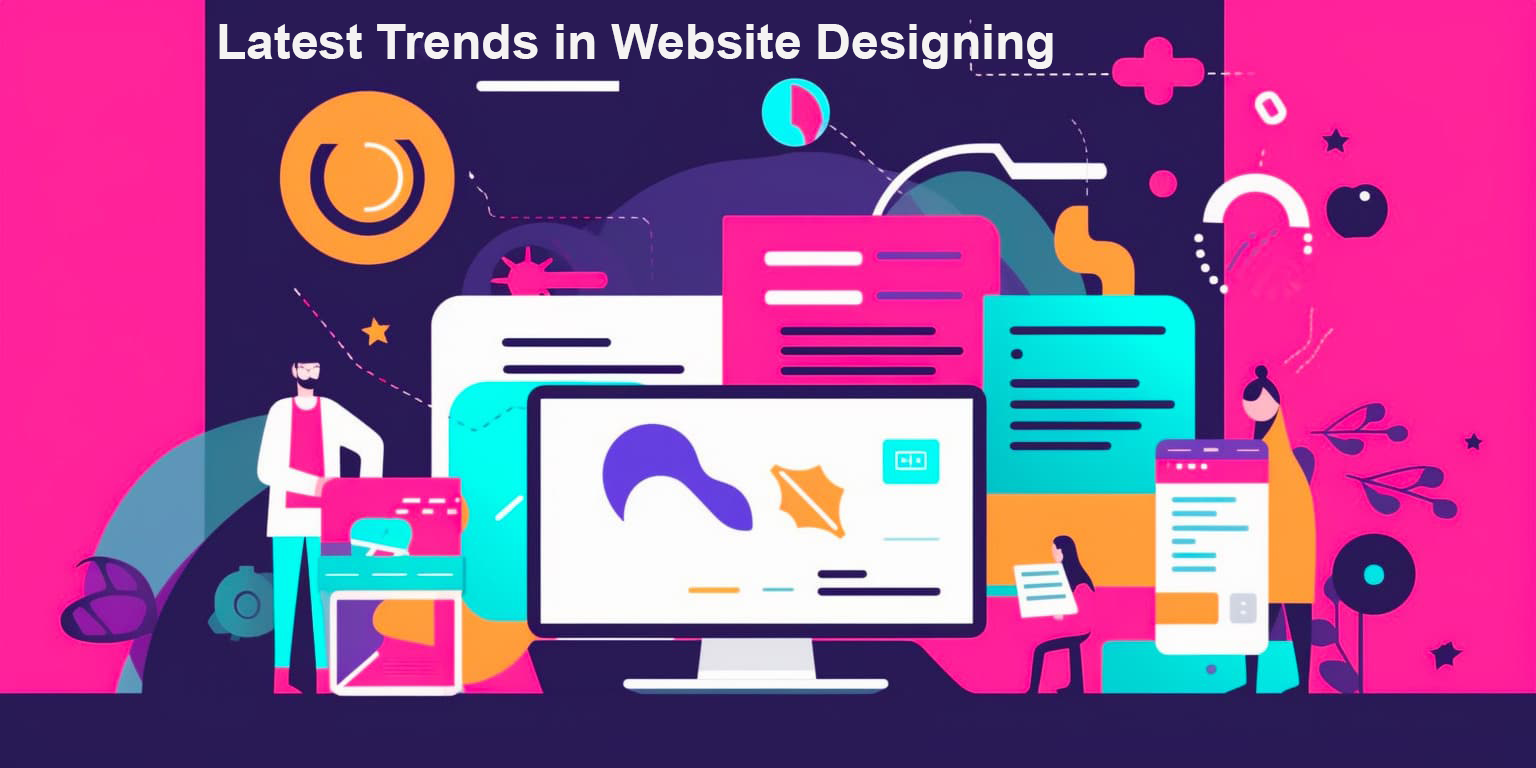itadmin2023-08-07T10:24:39+00:00
Embrace the Future: Unveiling the Latest Trends in Website Designing
Introduction
In today’s digital age, your website serves as the virtual face of your business. It is the first impression you leave on potential customers and can make or break their decision to engage with your brand. As technology advances, so do the expectations of users. Hence, keeping your website up-to-date with the latest trends in website designing is not merely an option; it’s a necessity for success in the competitive online landscape. In this blog post, we’ll delve into the hottest website design trends of the moment and why it’s crucial to upgrade your old website with a trendy new one.
Mobile-First Approach: Catering to the On-The-Go Generation
The advent of smartphones has transformed the way people interact with the internet. Mobile devices have now become the primary means of accessing the web. Hence, a mobile-first approach to website design is no longer a trend but a standard practice. A responsive website that adapts seamlessly to various screen sizes ensures an optimal user experience and boosts your search engine rankings, as Google prioritizes mobile-friendly websites.
Minimalist and Clean Designs: Less is More
Simplicity is the key to effective website design. Minimalist layouts with ample white space not only create a visually pleasing experience but also improve website loading times. Uncluttered designs allow users to focus on essential elements, such as your products or services, leading to higher engagement and conversion rates.
Dark Mode: Enhancing User Experience
Dark mode is an emerging trend that has gained immense popularity due to its aesthetic appeal and practicality. It reduces eye strain in low-light conditions and extends battery life for devices with OLED screens. Implementing a dark mode option on your website can attract more users and keep them engaged for longer periods.
Micro interactions: Adding Life to User Engagement
Micro interactions are subtle animations or effects that respond to user actions, making the browsing experience more interactive and enjoyable. They can be as simple as a button changing color upon hover or a loading animation. Incorporating micro interactions into your website not only adds a touch of sophistication but also creates a lasting impression on visitors.
3D Elements and Illustrations: A Visual Delight
The integration of 3D elements and illustrations adds depth and creativity to your website. With advancements in technology, 3D design has become more accessible and versatile, allowing businesses to present their products and services in a unique and engaging manner. This trend captivates visitors and sets your website apart from competitors.
Voice User Interface (VUI): Embracing the Future
With the rise of voice assistants and smart speakers, voice user interfaces have become an integral part of the digital landscape. Integrating VUI into your website enables users to interact naturally, driving a hands-free and convenient user experience. Voice search optimization is also crucial for SEO, as voice searches continue to rise in popularity.
Personalization and AI-driven Content: Connecting with Customers
Personalization is more than just addressing users by their names. It involves tailoring the content and user experience based on individual preferences, behaviors, and location. AI-driven algorithms analyze user data to deliver personalized recommendations and content, fostering a deeper connection with your audience and enhancing the chances of converting leads into loyal customers.
Augmented Reality (AR) and Virtual Reality (VR): Immersive Experiences
AR and VR technologies have opened up exciting possibilities for businesses to create immersive experiences for their users. From virtual product try-ons to interactive tours of physical locations, these technologies can significantly enhance engagement, encourage user participation, and boost conversion rates.
Why Upgrade Your Old Website?
Now that we’ve explored the latest website design trends, let’s understand why upgrading your old website is crucial:
- Stay Ahead of the Competition: Embracing cutting-edge design trends sets you apart from competitors who may still be stuck with outdated websites. A modern and visually appealing website attracts more users and builds credibility for your brand.
- Enhanced User Experience: Users expect seamless and intuitive navigation, quick loading times, and visually pleasing layouts. An updated website ensures a positive user experience, leading to increased engagement and higher chances of conversion.
- Mobile Traffic Dominance: With the majority of internet users accessing the web through mobile devices, a responsive and mobile-friendly website is essential to reach and connect with your target audience effectively.
- Improved SEO and Search Rankings: Search engines favor websites that prioritize user experience and adhere to the latest web standards. A well-designed, mobile-friendly website is more likely to rank higher in search results.
Conclusion
As the digital landscape evolves, so do the expectations of online users. Embracing the latest website design trends is not just about following the latest fads but about ensuring that your website remains relevant, engaging, and user-friendly. Investing in professional website designing services from IT Genie can revitalize your online presence, attract more visitors, and ultimately lead to business growth. So, don’t hesitate to take the leap into the future of web design and stay ahead of the curve!

